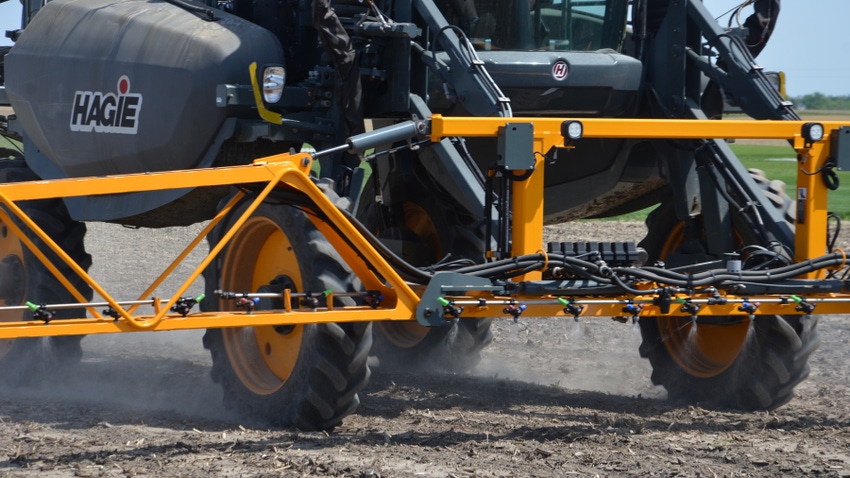
Plenty of nice, warm days in April allowed some growers in the region to get in their fields and start planting.
The most recent USDA Crop Progress Report shows about 19% of corn planted in Maryland, 17% of corn planted in Delaware, 6% of corn and soybeans planted in Ohio, and about 2% of corn and soybeans planted in Michigan.
A lot of acres remain to be planted, especially soybeans. And although prices have turned a little bearish — soybean futures prices for this fall and next spring are now trading under $13 per bushel — yield is still crucial to achieve the kind of production that can lead to profitable returns.
Shawn Beam, Northeast technical field representative for BASF who covers a broad area from Maine to Virginia, says having a plan in place to tackle one of the biggest yield robbers — weeds — can lead to good results later, but it’s important to start in a clean field.
Palmer amaranth, waterhemp, common ragweed, large crabgrass and foxtail are the most mentioned “problem weeds” Beam says that he hears about from area growers. Palmer amaranth can be especially hard to control, although it is mostly a problem south of the Mason-Dixon Line, and in parts of Pennsylvania and New York state.
An ideal spray program starts with a good burndown and strong residual that can carry you through the first 28 to 30 days of your crop coming out of the ground, he says. After that, plan for a post spray program and residual that can carry you through to canopy closure.
“So, having a second application of residual really is what’s going to carry you to crop canopy,” which typically happens around the V6 or R1 stage, Beam says. After that, the plants themselves can prevent weeds because of their size and ability to cut off weeds from needed sunshine that helps induce seed emergence.
When is the best time to apply a preemergence herbicide? Beam suggests going right after planting.
“So, a lot of our preemergence herbicides, you can put them out ahead of the planter; you can put them out right after the planter depending on field operations,” he says. “Ideally, they would go on after the planter. That way, you have an undisturbed layer of that herbicide right on the soil surface. But I understand with as big as farms … are these days, sometimes the sprayer gets ahead of the planter.”
Of course, Mother Nature needs to cooperate, too. Most herbicides need water to move from the surface into the soil, and this is where spray timing becomes crucial.
“Some of them photo-degrade on the soil surface; others do not. But ideally, the quicker you can get a rainfall on that application the better,” Beam says. "In general, within about two or three days is a good time. Some chemistries can sit there for a week or more, up to 10 days with no problems. Others, you know, if they sit for a week to 10 days, you're going to see some of that chemistry has photo-degraded and you're not going to get that length of residual you're expecting even when you do get that activating rainfall."
What if it’s dry?
Waiting too long for rain to fall is rolling the dice on potential yield losses, Beam says, even if full-season beans typically yield better than double-crop beans.
“You also see while there’s not enough moisture to get the herbicide activated, there is more than enough moisture to get the crop up, and the weeds can germinate,” he says. “In that sort of situation, a chemistry like Outlook, which only requires a quarter-inch of rainfall, might be best versus something like Zidua, which needs more.”
What about double cropping?
Although the growing season is more condensed in a double-crop system, Beam says growers should approach weed control in the same way.
"You still want to be able to plant that soybean in a clean field,” he says. “So, having a strong burndown program coming out of that wheat crop. A lot of times the wheat is doing a very good job as acting like a cover crop and limiting how many weeds are actually there, but that's not to say that it's going to control it 100%. You want to make sure you're applying some sort of burndown chemistry to make sure you control any weeds that are there. Again, include a residual with that from a preemergence standpoint."
Then, come back with a post application and second residual to carry the crop to canopy.
Plan for next year
It’s never too early to consider what you plan to do next year. Beam says a good weed control program always starts with remembering what went right and went wrong.
“If they're using something that, you know, they're happy with it and they're controlling the weeds like they want to, that's a good place to be,” he says. “A lot of times I'll get a grower, though, where they used a product … and for whatever reason they weren't happy with it. So, we need to discuss did you have enough rainfall to get that herbicide activated? What weeds were being missed? Do you suspect resistance? Any number of things can go in.
“But these are the decisions and answers you need to sort through before you start planning any herbicide program. Once you know what weeds need controlled and what level of control they are comfortable with, then you move forward.”
About the Author(s)
You May Also Like






